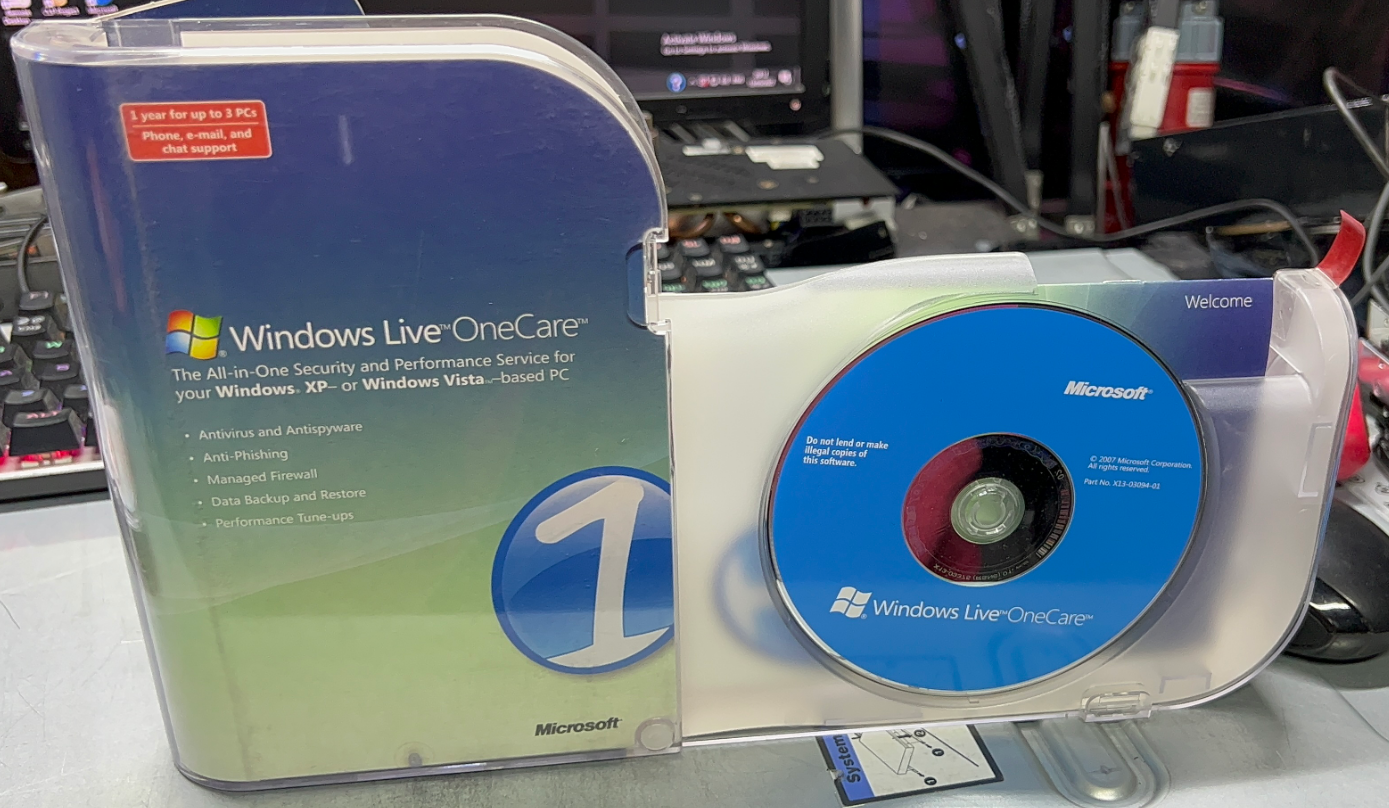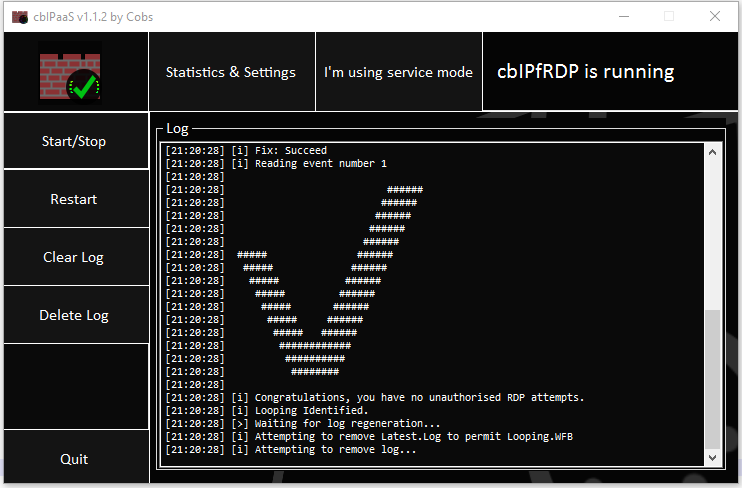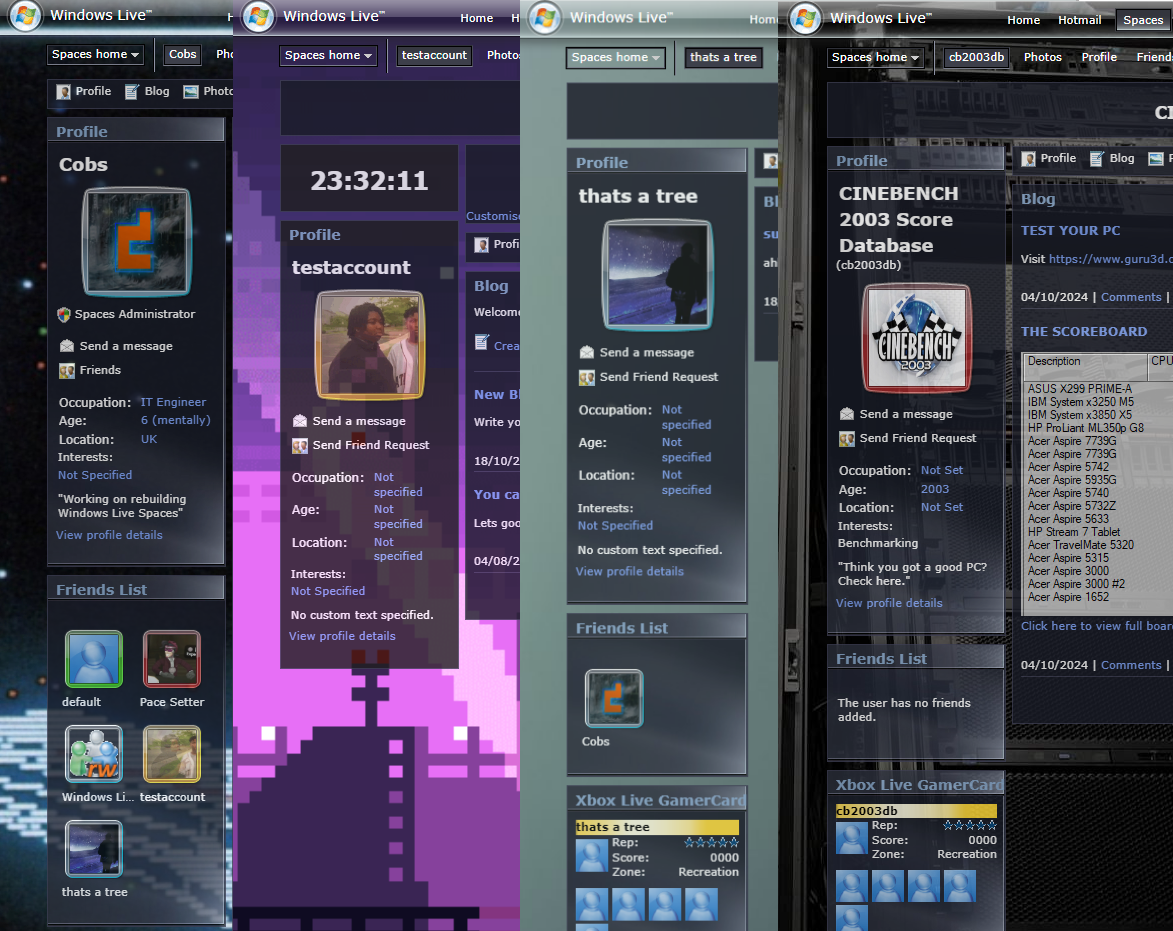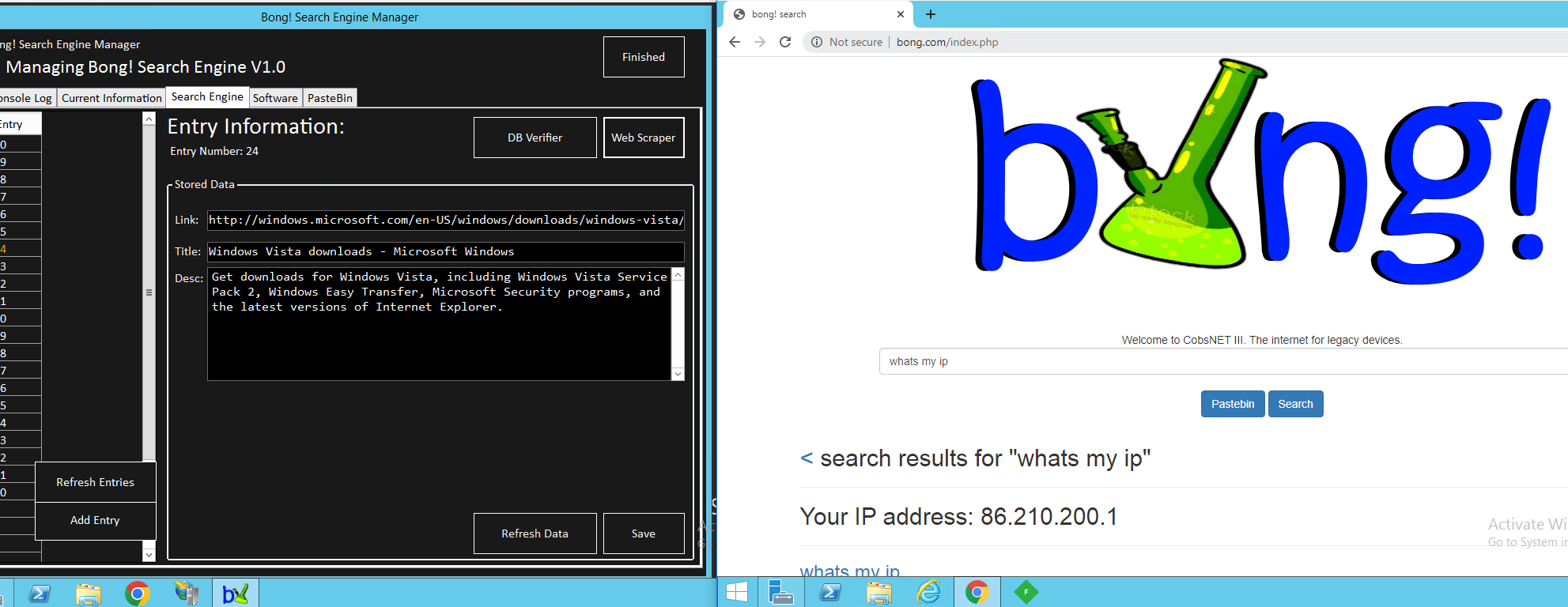Projects
These are my personal projects that I'm working on or have "finished". This page is still being built so some things may be missing.
Jump List:
- Windows Live OneCare Rewritten
- Cobs' Block IP from RDP (cbIPfRDP)
- Windows Live Spaces Rewritten
- cloud Lillith Platform
- CobsNET (Including Bong!, SVideo/Memester, Drivers Library Project)
A quick 'about me'
I won't bore you with endless shenangians. After finishing high-school, I went straight to an apprenticeship, I knew I wanted to work in the IT field and this would be my best chance of gaining real-world experience and qualifications. Throughout school and my working years I've been interested in Servers, Networking and Programming. Bringing this all together allowed me to create and pursue the projects below.
My personal missions are pretty simple. I aspire to prevent E-Waste, via restoring old devices, and prevent planned obsolescence, by building software solutions or networks.
I only have one or two personal projects on my GitHub profile. The rest are stored in a private Azure DevOps environment to which only a few trusted people have access to. Apologies if a project you're looking for is in there.

OneCare Rewritten
Project Status: Finished (2022), LTS Patches only, Open Source
Languages: VB.NET, Batch (Installer), HTML5, PHP, CSS (Website)
For those who don't know me personally, the OneCare Rewritten project is probably one of the biggest things I've done that has landed a difference. Sure, it's not game changing. But it helps prevent e-waste and lets people experience the blast from the past. Why did I make it? After stumbling across MJD's "failed" video on a look at it after he found a disc in a thrift store, I decided to take things into my own hands to restore it and bring it back to life. While the installer is dependant on Microsoft Servers for activation (which no longer exist), the actual packages to install the majority of the software still remain on the disc.
I built this project in VB.NET over the course of a year. Once I first obtained a disc, I had a quick look and put it off for a good 9 months and then finally working on it over a few weeks until I had a functional, clean enough installer.
Dedicated site: here. Source Code on GitHub here.

cbIPfRDP (Cobs' Block IP from RDP)
Project Status: Finished (2019), Closed Source
Languages: VB.NET
cbIPfRDP is a security tool I developed and builds on top of another project. Ironically I developed the core part of this (WinFblockIP) during an examination on router security. I found myself in a position during the exam where my servers were being hammered with login attempts because of an open non-standard RDP port. Not having the full time to look into it, I developed WinFblockIP, standing for "Windows Firewall Block IP". This tool would take an IP as an argument and block it in Windows Firewall. I built a quick program to read the event log and pipe all addresses to this application, fending off over 3000 IP's within a few hours.
When I got home, I started development on cbIPfRDP, this software I'd personally class as IDS and IPS. It runs as a service (optionally) and takes control of the Security log in Windows. It monitors it every 60 seconds and notes down any IP's that fail logins. After 3 failed attempts, the IP's are blocked. Whitelists can be setup and configured. Using this, I've built a honeypot server and created a global blacklist at protect.cloudlillith.net which anyone can download and utilise to protect their own systems from these attacks.
while I have no "planned" improvements on this project. I certainly would like to redo it at some point in future to make it more robust and refined.

Windows Live Spaces Rewritten
Project Status: In-Progress (Private beta), To-Be Open Source
Languages: HTML4, CSS, PHP, VB.NET
Windows Live Spaces was a platform owned by Microsoft around the 2006-2007 era when Windows Vista was around, it was previously called MSN Spaces and you may remember it! Unfortunately, Microsoft pulled the plug due to lack of users.
This project aims to bring it back with new functionality and a fresh mindset. So far, so good. I've had to rewrite the entire front and back-end which has caused some features to be lost or broken but the core functionality is there.
I've added new features such as backporting the Windows Live Frames which I think look cool, you'll notice them from Windows Vista and 7 Logon screens. New Themes have been added, including live ones which utilise higher resolution GIFs. Currently only the blogging function
works and is usable, whilst the rest is still being worked on. There's still an entire theme engine to build for customisability, the tour, community updates, Windows Live EXPO, Messenger system etc. It's been going on since July and there's plenty more to come.
cloud Lillith Platform (2017-2023)
Named after an AI I built months before the AI boom, I decided to build a platform to host all my projects and interact with communities. This platform was for VPS', but with no intention of any financial profit. There were some donations and I hugely respected that, however, money was never the intention. A free platform for people to learn and develop their skills on real hardware and platforms was the idea. It was built entirely off ex-corporate parts and ewaste hardware I'd acquired via an e-waste haul of a company that was closing down and through eBay deals.
This project aimed to build a redundant, scalable platform using various CPU architectures, such as traditional x86/amd64, Itanium and PowerPC (IBM Power6+ Era).
The platform was a success and gained attention, unfortunately, maybe a little too much, as a result, most of it has been shut down to avoid conflicts of interest. Now only a few specific people have access to what is left of it, and still, no money is made from it despite the smaller costs required to keep it alive.
The website is still live, however many of the projects and pages on it are now non-functional and I have no intention of making these publically functional again anytime soon. It was a great time and I gained a lot of experience through it and met some amazing people, but I don't want any troubles. Not in the slightest. Today, it's mainly used as a grounds for experimentation for my personal projects.
Some projects from this are still live, however are now stored in Hetzner cloud rather than locally to reduce power cost, such as this website, the OneCare Rewritten Project and a few other bits.
Fun fact: The main background photo you see on the homepage of this site, is the platform I built.

CobsNET (2020-Present), Private
If you're wondering about the name, it's because I'm nicknamed "Cobs" online....long story for another day.
The idea behind CobsNET is simple. I have quite a lot of old devices, computers, tablets, laptops, etc you name it. I'm pretty sure you probably have an old phone or laptop lying around too. Most people either junk them, sell them, or leave them in a cupboard to rediscover 20 years later.
Being me though, has a few benefits. Those benefits specifically being a couple racks full of servers, some networking equipment and basic programming knowledge. Through these means, I was able to create my own "internet". For the tech nerds out there, it's more of an intranet of intranets with a backbone toplogy.
There's one primary 40-Core server behind all of this, an old IBM System X 3850 X5, with maxed out CPUs (4x Intel Xeon E7-8870 V1), 128GBish of RAM and 5TB of RAID5 HDD storage. At the tail-end of 2023, this was upgraded to a new (old) IBM X3850 X6. 192GB RAM, same storage, newer E7 CPU's howevever. This hosts multiple virtual routers, web servers, email servers, everything on the net. This server physically connects to multiple switches, one of which has a DrayTek Vigor 2860ac plugged into it. This used to connect devices that support WiFi only into the network without needing to change gateway settings etc.
Can I access CobsNET myself?
Yes and No, technically it's accessible and works externally with the right details and credentials. You'd get routed into the network. Currently however this is private and only 5 people have access. Since the certificate authority is still in development and not properly in place, any data transmitted over CobsNET is visible to other CobsNET users. I don't want to be responsible for someone doing something silly, nor do I want anything to go hugely wrong and result in damage to what I've created. It's fantastic for demonstrating things and creating scenarios, learning new software techonologies and preserving the life of my old devices (even if that means recreating my own substitute services).
The bong! Search Engine

Addressing the elephant in the room, the name. Bing was already taken, and we need a bit of laughter in the world, so I named it bong!
The Internet is a big place, and so is my one! Having to remember URL's and IP addresses can be tough. What's the first thing most people go to when they load up an internet browser? 100 points if you guessed a search engine. I needed one too.
For this I needed major RAM efficiency as running CobsNET on only 128GB RAM is a bit of a stretch, so no databases for me. To make this search engine, I utilised the Microsoft IIS Web Server platform and wrote an algorithm in PHP which could search a structured folder layout to match search queries, even on hard drives, it's still pretty fast. Putting a simple HTML written interface over the top and boom, small-scale search engine.
Now I could sit there all day long adding entries, but this was slow, I needed something faster. I used Visual Studio 2022 to create a Windows Forms VB.NET project targetting .net 4.5 (compatible with Server 2012R2 with no additional installs needed). This application served as a manager for the search engine and I also created a quick HTML web scraper in it so that it could identify the title and META tags on URLs its fed to automattically generate search engine entries. It works amazingly.
The Drivers Library and Site

Drivers, today, more a thing of the past unless you're clean installing Windows. But old laptops and devices, they sometimes need drivers. With no real internet access, I wanted a way to still get my devices setup without needing USB sticks or having to connect them to the real internet. So, how can one accomplish this? Simple, we need a drivers library. Most vendors have them, however, notably Acer and Intel have started pulling drivers and software for older devices. Luckily, I archive every single driver package I download (primarily because my real internet connection is slow due to being in the sticks).
To create this was very simple. I first needed a folder structure, remember, the servers this is all running on are very limited on RAM. From there, it was as simple as making a web UI to parse the data, add a search function to it and then create a local application which I can use to manage it.
I then went one step further and added a function to allow creation of Models, i.e. a real laptop. This is useful in scenarios where you might not be searching for a specific device name or PCIe ID, but instead just want all the drivers in front of you for a specific modeel of a device, i.e. an IBM System x3850 X5. The models page checks for specific folders within itself to create the categories and within those stores the IDs of the drivers to put in those categories, creating a semi-realistic drivers website, like you'd find on Dell or Acers website. I think it's turned out pretty well!
SVideo / Memester
The "SVideo" project basically stands for share-video. The idea is for my legacy internet to have a form of YouTube. To make this, I simply used to the same algorithm that I wrote for Bong, but had it output slightly differently so that I could get a nice layout of videos rather than search-enggine entries. I then went a step further and added Channels, a view counter and a mini-embed for playing music as a b-tec Spotify until I can create something similar. Everything works pretty well until I gave some friends access to it. This highlighted a lot of bugs I was able to fix, however they quickly found it to be very useful to host memes on. Recognising this, I added proper embed support for platforms like Discord.
During creation of this, I found that the website would crash on lower-end older devices, specifically Lumia Windows Phones with less than 768MB RAM. The cause? My search engine algorithmm was returning results and the search page I built for SVIDEO would simply embed the videos using a video element. This was because I wouldn't need to have a thumbnail generator as the browser would do that automagically. Unfortunately, this meant the browser would transmit a lot more data, and on older browsers, well, they'd try to load every single video searched. To resolve this, I created a proper thumbnail tool using FFMPEG and VB.NET which could automatically create thumbnails for all the videos if they didn't have one already. Happy days.